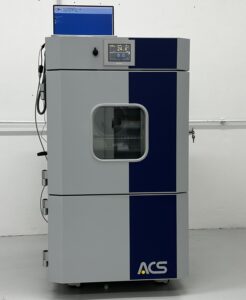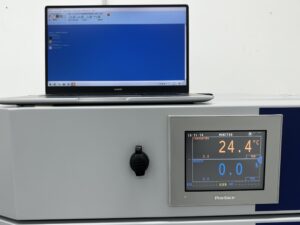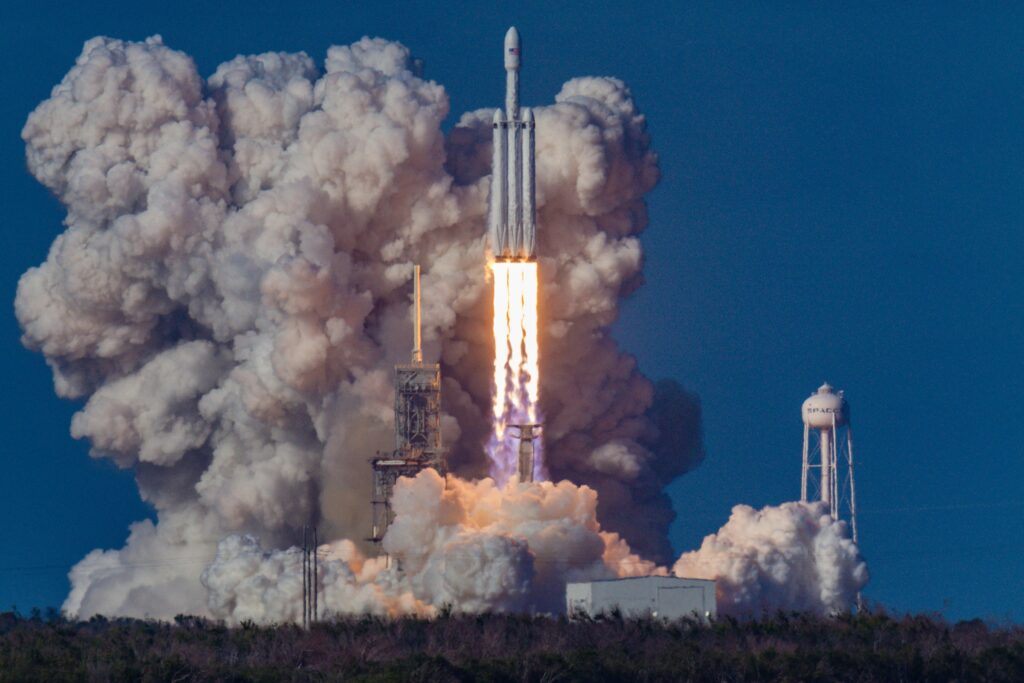In Tecnottica, we have recently introduced a Climatic Chamber for environmental testing to ensure higher reliability of our Coating for Aerospace applications.
The Climatic Chamber allows us to test the Coating, its characteristics, and its behavior in the context of usage, in order to verify its resistance to stress factors, such as extreme temperature and humidity variation.
THE CLIMATIC CHAMBER
Climatic Chambers are used for conducting environmental simulation tests, such as thermal shock tests, which are ideal for the production and quality control of Optical components and Coatings. The aim is to prevent unforeseen defects during the production that could compromise the use of Optics.

In a Climatic Chamber it is possible to recreate specific environmental conditions. The sample to be tested is placed inside the chamber, and the machinery is set to replicate the desired environmental conditions, including temperature range, temperature variation rate (gradient), humidity range, and humidity variation rate.
The ACS DY110 C Climatic Chamber controls temperature by heating, cooling, and uniformly distributing the heat within the test area, with a temperature range between -70°C and +180°C. To control humidity, the Chamber humidifies and dehumidifies the interior within a humidity range between 10% to 95%.
THE CLIMATE TEST

Climate tests are used to verify the behavior of an optical component in its normal operating environment and observe how it reacts to climatic changes, particularly temperature and humidity variations.
Climate tests are essential for the production of Optical components and Coatings for Aerospace applications, as well as for all industrial sectors in which optics are subjected to extreme climatic conditions, such as the military and medical sectors.
The environmental test ensures that the Optics, exposed to strong stress factors such as climate variations, solar radiation, and high humidity levels, are not damaged during the mission.
 Unlike other terrestrial applications, environmental testing of prototypes for space applications is complex, because it must replicate extreme conditions that are not present on the planet’s surface. To ensure that the Optics and Coatings meet international standardization requirements and withstand hostile conditions, environmental tests during the production phase are regulated by ISO 9022, ISO 9211, and the ECSS-Q-ST-70-17C standard.
Unlike other terrestrial applications, environmental testing of prototypes for space applications is complex, because it must replicate extreme conditions that are not present on the planet’s surface. To ensure that the Optics and Coatings meet international standardization requirements and withstand hostile conditions, environmental tests during the production phase are regulated by ISO 9022, ISO 9211, and the ECSS-Q-ST-70-17C standard.
In Tecnottica, we assess the durability of the Optical Coating under harsh conditions, testing each production batch. We evaluate the climatic variations on a Witness sample, a plane disk made of the same material as the optical component and having the same refractive index as the substrates.
In the past, these Quality Tests were conducted in controlled and certified Third-Party laboratories; today, thanks to our new Climatic Chamber and the training of our technicians, we are able to perform these tests internally in our Coating Department.

The Climate Chamber has been installed in our highly specialized Coating Department, which in less than one year from its inauguration allowed us to internally produce certain types of Optical Coatings, manufacturing space-qualified Optics, and streamline the production process. The DY110 C will further reduce our production times, enable us to maintain the high quality standards that sets us apart, and focus on Coating production for the rapidly growing Aerospace sector.
Together with the new Climate Chamber we have introduced, for our Customers and Partners, a service of environmental testing, compatible with the technical specifications of the chamber, for Optics, Coatings, and Opto-Mechanical parts.
Photo credits SpaceX on Unsplash/ Bill Jelen su Unsplash
